Sometimes one has redundant power inputs available, but a piece of equipment only has one power supply. We often get questions on how one can get single PSU network switches, firewalls, VPN appliances, and servers to use redundant power. One option is to upgrade to a higher-end device with two PSUs. Another is to introduce an automatic transfer switching or ATS PDU. ATS PDUs do not fix every power, such as a single power supply failing, but they are a useful tool in many scenarios.
This is not going to be an overly technical article since we want the subject to be accessible to a larger population.
Understanding A + B Power Without an ATS PDU
First, we are going to illustrate the case without an Automatic Transfer Switching (ATS) PDU. Here is a simple diagram with two zero U PDUs. One is labeled PDU A and one is labeled PDU B corresponding to a typical A + B power setup. The network switch is a single power supply device and is only connected to PDU A.
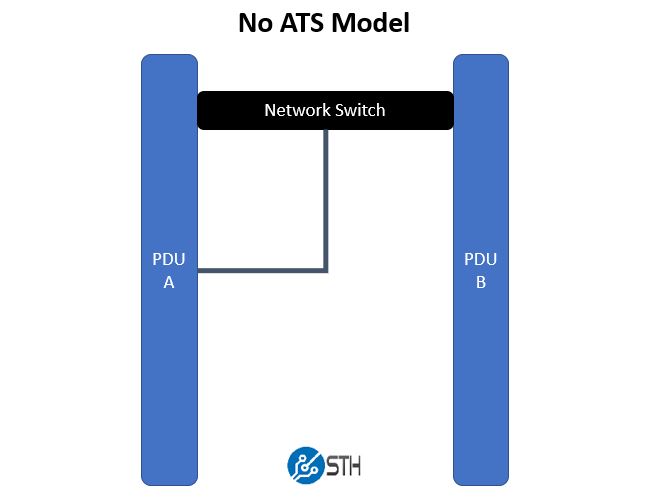
If the “A” side power fails and PDU A loses power, the connected network switch also loses power.
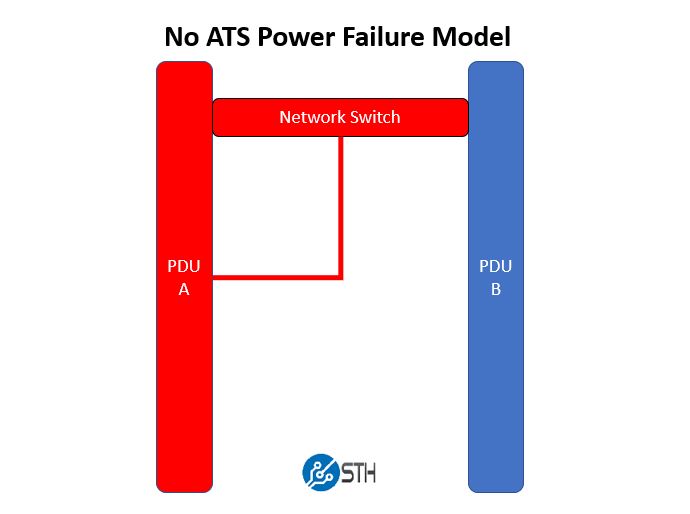
This is far from ideal since it means that the extra expense of having A + B power is for naught since the network in the rack goes down when the A feed goes down.
How an Automatic Transfer Switching (ATS) PDU Helps
Let us introduce an automatic transfer switching PDU to the mix. Here the single network switch power feed is connected to the ATS PDU. The ATS PDU is then connected to both PDU A and PDU B.
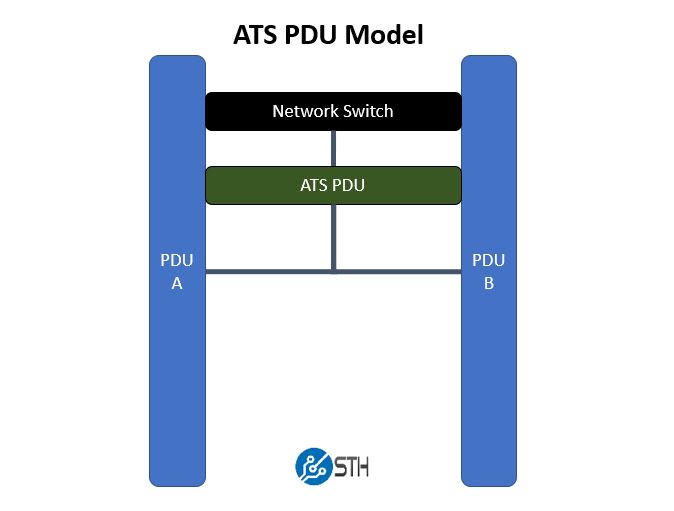
When we have a power failure on the A side power, the picture is different with the ATS PDU.
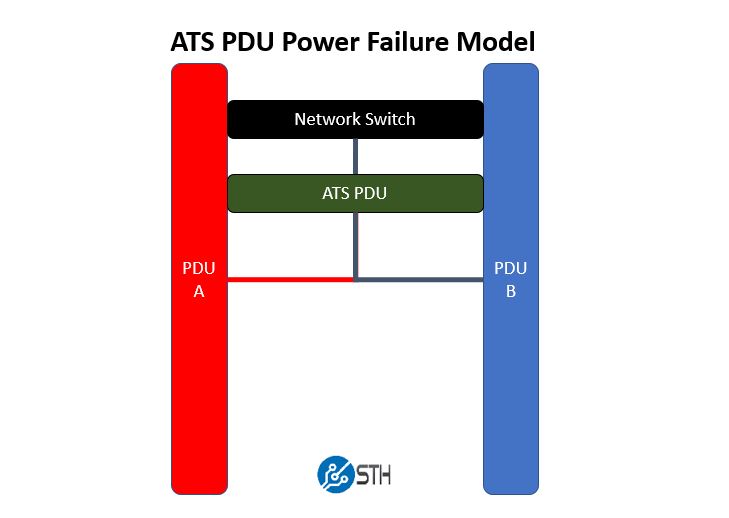
Here the automatic transfer switch PDU automatically directs power from PDU B to the network switch. There, the single-corded switch is able to take advantage of two power sources.
Final Words
Automatic transfer switching PDUs are not the perfect solution to having equipment with redundant power supplies. At the same time, they are a way to provide redundant power feeds to single-corded equipment.
When dealing with PDUs, remember to “not be that guy.” Check voltages on your power inputs and match them to your PDUs. While many equipment power supplies can handle a wide array of input voltages, PDUs tend to have specific voltages they work with. Check before installing a new PDU into your environment.

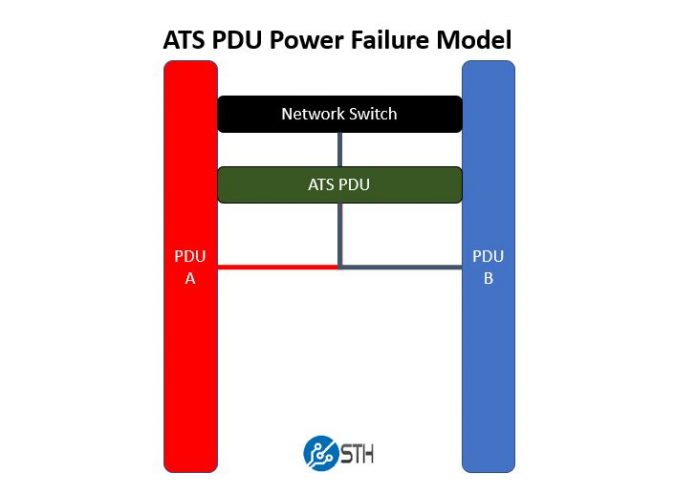



If you implement this, remember that when you turn off one power strip (ie to re-route cables), that you need sufficient available capacity on your other circuits.
If you are careful with the loading of your circuits then you may be able to go as far as 2/3 utilization, though 50% utilization will be safer.
It is a good idea before deploying a bunch of new hardware on existing circuits to verify that there is enough available power on those circuits if one of your circuits gets turned off.
If you implement this, it is one of the things to add to your maintenance schedule. Failure to maintain sufficient capacity in one or two your power supply lines can result in an electrical cascading failure which need physical hands on to resolve.